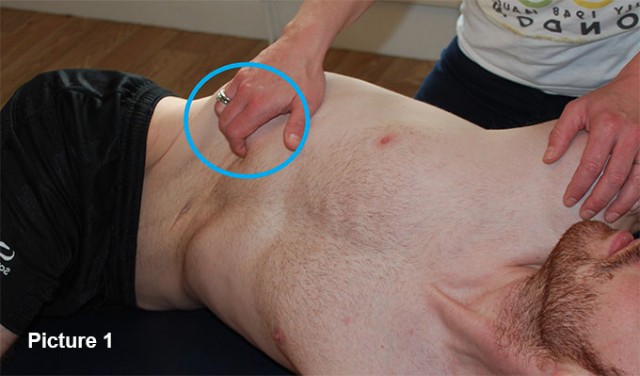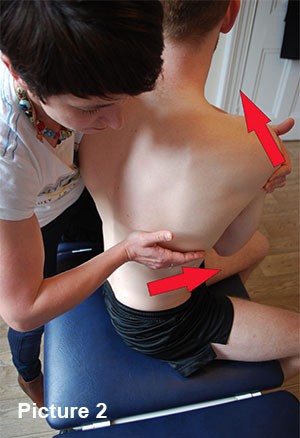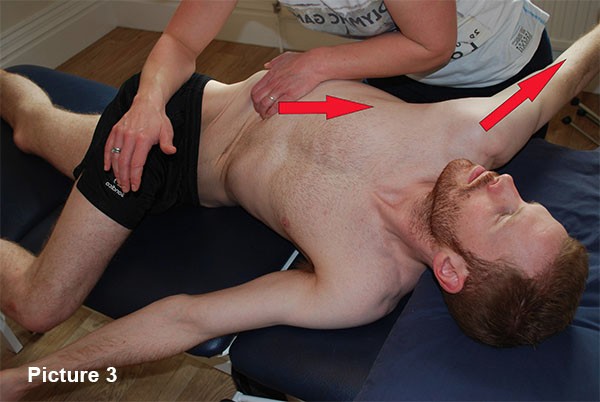Getting a stitch is one of those annoying running niggles that often comes about when you least expect it. So what steps can you take to prevent a stitch, aside from not eating too closely to exercise?
The cold air is commonly blamed for shortness of breath but stiffness in the rib cage can be one of those things that you don’t know you are struggling with until you start to get stitches or rib cage pain.
How does the pain present itself?
Typical stitch pain is a familiar feeling to runners and is often related to eating close to running . This can be run off and eases with slowing down.
There is a type of pain though that becomes repetitive and almost predictable. It might be at a point in a run or session; a particular pace or a downhill section. It is most common on the right-hand side under the rib cage.
Playing with eating and drinking times makes no difference to its onset. This is therefore more than ‘just a stitch’ and is related to the ribs, thoracic spine and potentially the diaphragm and liver as well as blood vessels.
There are of course lung specific things like infections or asthma. However, regardless of asthma, if you show the following signs it is worth trying to mobilise the rib cage.
Tests to do:
1. Rib motion
The ribs move up and down like bucket handles. They are attached from the spine at the back and to the sternum or breastbone at the front. Place your hands on your ribs and face a mirror. Breathe evenly and deeply and watch what happens with your ribs. They should rise up and drop down over the same length smoothly and over the same distance. Any reduction in the height raised or a difference in the speed of motion indicates a potential issue. The rib side that is sluggish or does not rise is the one likely to have a problem. It could be both sides, so if in doubt compare with someone else.
2. Thoracic spine motion
Sit on the side of a chair in front of a mirror. Put your arms over your chest and twist either way. Your shoulders should turn almost 90 degrees to your pelvis. If you have someone to look at your back there should be an even ‘S’ shape. (‘S’ for right rotation, backwards ‘S’ for left rotation.) If there is a difference then you need to mobilise this. Try to breathe whilst fully rotated. It should feel similar range and difficulty.
3. Palpation
Lay on your back, head supported and totally relaxed. Press your fingers into your tummy just under the right side of the rib cage along the rib. It should be soft and not tender. Like the left side.

If it is tender and tight and quite hard then it is likely to be that the diaphragm and liver fascia is stiff.
It is odd to talk about liver fascia. However, our organs are held in place with fibrous tissues called fascia. The liver is attached under the rib cage on the right to the ribs and diaphragm. Alterations in how the ribs and diaphragm move will alter how the fascia moves and the whole area become dysfunctional.
Treatment
The typical issue in this predominantly right-side issue is:
- Rib stiffness to breathing in on the right side.
- Reduced rotation to the left and the ‘S’ shape looks flat at the bottom of the ‘S’.
- Tender and tight under the rib.
There are many specific manual techniques used by physiotherapists to mobilise specific ribs and thoracic spine. However, there are a couple of easy techniques to treat rib mobility and thus your breathing . You will need assistance though….
Seated rib rotation
The ‘patient’ sits sideways on a firm chair or on a stool. They cross their arms over their chest, hands on shoulders. The person who is going to help, the ‘mobiliser’, places the base or heel of their hand on the rib or level of ribs that does not move well. The other arm they hold around the patient’s chest, over the top of the shoulder, holding onto your arm to help guide the movement.

The heel of the mobiliser’s hand should be tucked under a bony bit of rib. The side of the hand should follow the ribs.
Next the patient is asked to turn to their upper body away from the mobilising hand, again the motion is followed with the hand and the movement is guided with the mobiliser’s arm around the patient’s chest.
To treat the stiff area the mobiliser asks the patient to turn as far as they can and the movement is followed to the end of the range. Stop there.
The patient breathes in and holds the breath. The mobiliser pushes upwards with the rib to increase the movement. The patient breathes out after a few seconds but the mobiliser holds the rib in place. The mobiliser then asks the patient to turn a little more and breathe in then out whilst the rib is held once again.
Keep a firm pressure on the rib. Repeat this cycle 3 to 4 times.
Do not force into pain and repeat only 3 -4 times so as not to hyperventilate.
Lying Rotation and rib lift
The patient lays on the unaffected side. So, if it is the right side that is affected then the patient lays on the left side. The patient puts their right leg over to the front and the left leg is straight. The upper body is twisted so the shoulders are as flat as possible to the bed or sofa.
The mobiliser puts their right hand on the pelvis and the left hand tucks under the ribs on the right. The Patient reaches their right hand out as far as possible to twist the rib cage. The mobiliser asks the patient to then breathe in and reach whilst they pull and lift the ribs gently upwards and towards the head. Hold the breath and position for a few seconds. Repeat 4 times then relax for 30 seconds and repeat 4 times.

Self-exercise
The patient should repeat the movement of twisting and breathing several times a day to help keep the movement and the mobilisation could be repeated daily. If in doubt please seek help from a running specialist physiotherapist.














